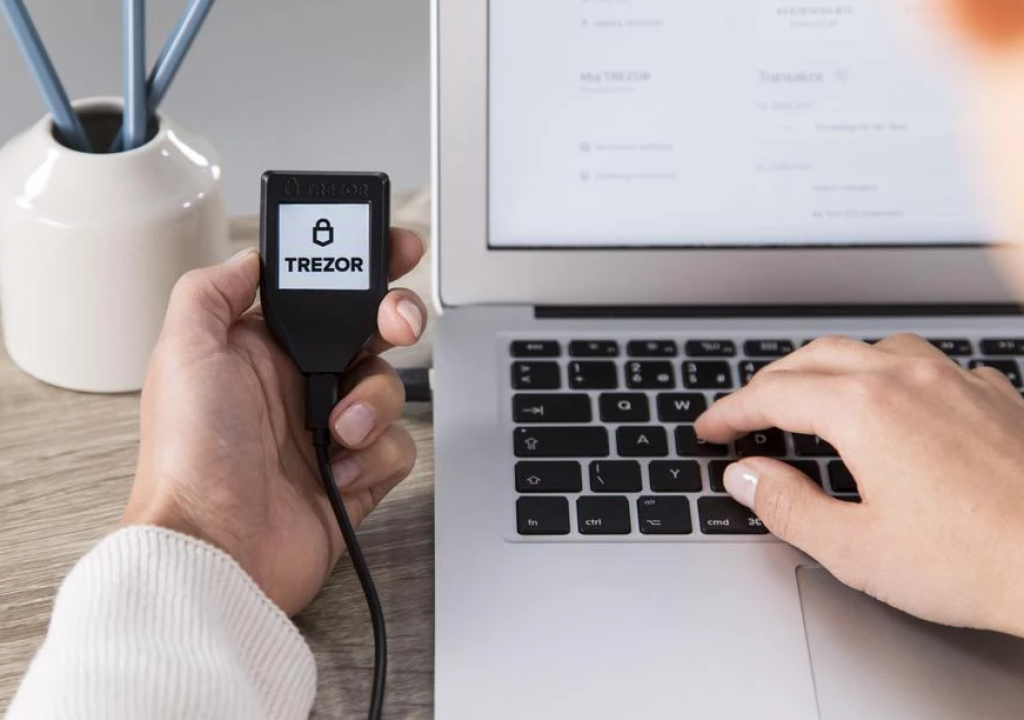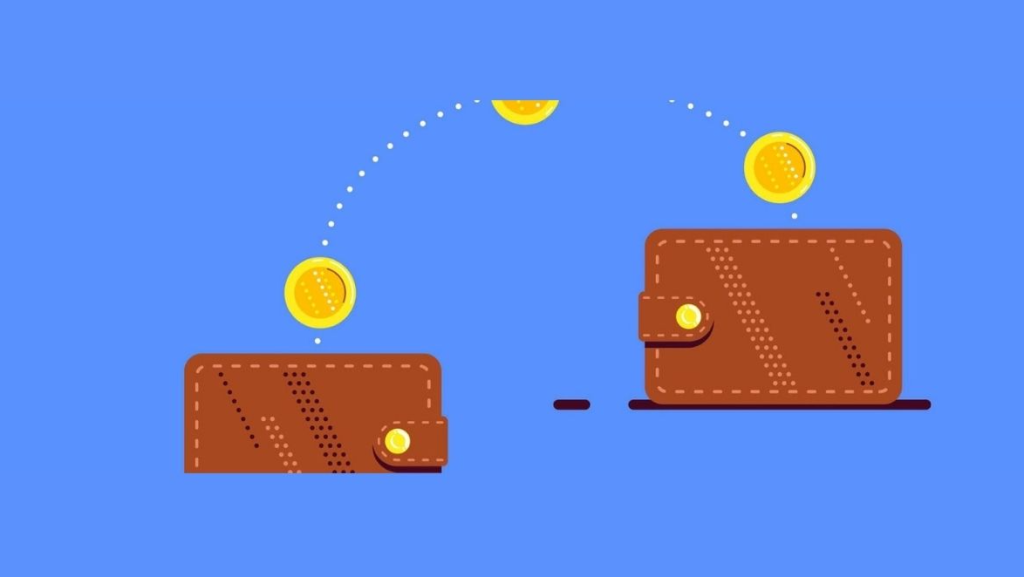In a nutshell, every crypto transactions costs some money that is paid to the network validators (miners or stakers). In addition to this, some platforms you use, like exchanges, charge their own fees for the services they provide.
So, depending on where do you send your coins from to your hardware wallet, the transaction might cost you only the network fees or both the network fees + service fees (like withdrawal fee charged by some exchanges).
What’s a hardware wallet?
Hackers and security flaws in the software make software wallets unsafe. Unlike software wallets, which are based on third-party code that runs on your internet-connected laptop or mobile device, hardware wallets are completely independent devices that ‘live’ outside the internet.
They do not rely on a central server to manage your funds. Instead, they store your private keys securely on a tamper-resistant microchip. That secure chip is used to sign every transaction.
Bitcoin transactions are sent from your computer to the hardware wallet, where they are signed and then sent back to your computer. This ensures that your private keys are never stored on your computer, making you far more secure. In this way, hardware wallet ensures that no one else can use your money without your knowledge. Because of this, hardware wallets are considered safest option to store crypto coins.
How to send bitcoin to a hardware wallet?
To learn how to transfer bitcoin to a hardware wallet, you must first get a hardware wallet. They are not free so you will need to cash out $100+ for the best devices from the industry.
- Buy a hardware wallet. You have many options, some of them are Trezor, Ledger Nano S, and Ledger Nano X.
- Plug it into your laptop (or connect via bluetooth in the case of Nano X) and launch the official software of the hardware wallet on your device. To set it up properly, just follow the on-screen prompts. During setup, you’ll be asked to create a PIN.
- To better manage your wallet and view your transaction history, download the relevant ledger app.

Now when your hardware wallet is ready, transfer some Bitcoins to it. To do that, follow the steps in the text below:
- If you want to send or receive bitcoins, you’ll need to connect your wallet with the official app that you install on your device (laptop or mobile).
- Enter the prompted PIN code of your hardware wallet.
- In the wallet app, click to install the Bitcoin app.
- Open that application and click “Receive” in the menu.
- In the window which will show, you can see a Bitcoin address. Copy that Bitcoin address.
- Paste this Bitcoin address to your exchange account (or other wallet/service you are sending your coins from)
- When the transaction is complete, you may disconnect your hardware wallet and put it away safely.
What are transaction fees, and who charges them?
To send crypto from one wallet to another, you must pay a transaction fee.

It takes time and energy to process a transaction using the blockchain. Fees like this are used to reward the network’s miners and validators for their efforts. In a blockchain system, transaction fees can vary and adapt to the level of activity on the system.
All Bitcoin transactions that have not yet been included in a block are stored in a “memory pool” until they are chosen by miners. If there are too many transactions, miners will prioritize those with the highest fees and queue the others until the next block. Thus, many crypto users are eager to manually boost transaction costs when urgency is of the essence.
These fees are fixed on most crypto exchanges, but users may have the option to adjust fees when using certain wallets.
Many exchanges charge no withdrawal fees except the blockchain transaction charges, while some will charge more depending on your country or the withdrawal type.
FAQs

Yes, it costs to transfer from Coinbase to a hardware wallet because you pay blockchain transaction fees when you transfer crypto off the Coinbase platform.

Yes, it costs to move crypto to a cold wallet because you pay blockchain transaction fees when you transfer crypto off the exchange wallet to another wallet.

Yes, it costs to send crypto to Ledger because you pay blockchain transaction fees when you transfer crypto from one wallet to another.

Yes, you can withdraw from coinbase to a hardware wallet, but you will pay blokchain transaction fees at that moment.

Yes, it is free to send crypto to another wallet if you send it to another wallet of the same exchange. If you send it to a wallet of another exchange or to a hardware wallet, you will pay blockchain transaction fees.

To move your crypto from Coinbase to a hardware wallet, follow these steps:
1. Open the ![]()
2. Tap Send.
3. Enter the amount you’d like to send and select the asset you’d like to use.
4. Tap Next.
5. Go to your hardware wallet and click on ‘receive’ to see and copy your address
5. Enter the exact hardware wallet address to which you want to send the coins.

To lower your fees during your withdrawal, we recommend selecting a fast and low-fee coin to do so. One such coin is Stellar Lumen.

For the transmission and storage of digital assets, Trezor does not impose any form of wallet fees. You only pay blockchain fees.

In the ecosystem of crypto wallets, Coinbase Wallet stands out for having some of the lowest costs, which makes it a desirable option for frequent Web3 users.

You must pay a gas fee each time you send or receive crypto

Yes. A transaction fee is what you’ll be charged when you transfer your crypto holdings from Coinbase to Ledger. The good news is that Coinbase distributes the network costs between you and bundles your transaction with those of other customers who are also sending transactions simultaneously.
CaptainAltcoin’s writers and guest post authors may or may not have a vested interest in any of the mentioned projects and businesses. None of the content on CaptainAltcoin is investment advice nor is it a replacement for advice from a certified financial planner. The views expressed in this article are those of the author and do not necessarily reflect the official policy or position of CaptainAltcoin.com


